 Your new post is loading...
 Your new post is loading...
Apple has more than $1 billion budgeted for original programming, Facebook wants its own version of “Scandal” and Google is ready to spend up to $3 million per episode on a drama. The three digital giants have signaled to Hollywood that they are serious about entering a television landscape that Netflix and Amazon shook up just a few years ago. Their arrival will make an already hypercompetitive industry even more ferocious. This year, there are expected to be more than 500 scripted TV shows, more than double the number six years ago. Although there have been some signs that the industry’s output may plateau — cable companies like A&E and WGN have said they are getting out of the scripted television business — the entry of Apple, Facebook and Google into the fray almost guarantees that the volume of shows will continue to grow, even as viewers grapple with a glut of programming and an expanding number of streaming platforms. With the prospect of a flood of tech money about to rush in, Hollywood has welcomed the news....
An Accenture survey of internet users around the world found a dramatic shift in TV viewing preferences, with computers abruptly displacing TVs as the preferred device for watching TV shows. The study, which surveyed 26,000 internet users worldwide, found a sharp drop—from 52% in 2016 to 23% in 2017—of people who said they preferred to watch TV shows the traditional way, on a TV. Meanwhile, more than four in 10 respondents (42%) said they preferred to watch TV shows on a laptop or desktop, up from 32% last year. The number who opted for smartphone viewing also grew, but less dramatically. When it comes to short video clips—though many respondents preferred to watch them via a laptop or desktop—the preference for viewing them on smartphones grew substantially in 2017 compared with a year prior....
Headlines about TV viewership have not been particularly positive. Common themes lately have been: “TV ratings plummeting,” “NFL viewership in decline,”“Millennials unplug from TV,” or “Cord-cutting, cord-shaving growing.” Then there’s a big favorite lately: “TV can’t deliver reach like it used to.” While there’s some truth in all of these ideas, they don’t tell the whole story of TV viewership today. First, overall TV viewership is not falling off a cliff. After four-plus decades of extraordinary growth, there is no question that the average amount of time Americans spend watching old-fashioned TV plateaued over the past few years and has now begun to decline. However, this overall decline is in the very small single digits annually....TV has not lost overall reach. In fact, its overall ad-reach capacity has never been greater. What’s changed is that TV audiences have fragmented their viewing across hundreds of different channels and all of the dayparts, and most major brands keep making the same buys. They’re chasing the few shows with bigger ratings without trying to understand how to scientifically and efficiently re-aggregate the fragmented audiences. Doing so is hard work and takes time and investment, all in short supply in media buying ...
The hyper-fragmentation of consumer choice across all screens is reducing the share of choices they make to watch a TV channel. That’s among the top findings coming out of the latest edition of Nielsen’s “Total Audience Report.”
The report, which was released to clients Thursday, is the first to publish shares of channels received and viewed by the average American household in a while.
It shows the average number viewed has fallen to less than 10% of the channels they receive.
That’s down dramatically from the last time Nielsen published such data, which showed the average was still in the double digits....
There’s no mistaking the dramatic changes taking place in the video content realm. Consumers are avidly seeking out content from a variety of traditional and new content providers, and they’re eagerly tracking it down across mobile, digital and linear channels. In fact, American media consumption recently hit a new milestone in the first quarter of 2016, with subscription video-on-demand (SVOD) usage now equal in the U.S. with DVR usage. While the myriad content offerings is a bounty for consumers, who now spend 70 hours each week with media, content providers are increasingly challenged to break through and make sure their offerings are front and center. Despite the commotion in the space, however, many of the industry’s best-known content providers agree on one thing: The consumer needs to be the primary consideration. "I’ve been a proponent of a holistic view of content for consumers my whole career,” said Kris Magel, president of Initiative U.S., during a content monetization panel at U.S. Consumer 360 this week in Las Vegas. “And that puts the focus on new technology, new programming and new revenue opportunities. While some have said video has changed more in the past five years than in the past 30, I would argue it’s changed more in the past single year than in the past 30 years.”...
For a while, it seemed like television was being supplanted by online video as cord-cutting increased dramatically. However, it’s becoming more clear that TV and social media are perfect partners, as tweets and other social posts spike around event television. New data from Nielsen Social demonstrates how much activity surrounds broadcast TV, streaming and cable.
Twitter users are highly engaged during popular shows and live television events, both in terms of hashtags and @mentions. #SB50, the official Super Bowl hashtag, received more than 3.7 million tweets. Other live events like the #Oscars also fared very well, with 2.9 million tweets. And scripted television events scored, with #Empire generating 702,000 tweets and @kanyewest receiving 489,000 tweets during his Saturday Night Live performance.
Whether it’s online streaming, cable TV or broadcast TV, recurring series seem to have remarkable staying power on social. Empire received an average of 387,000 tweets from 95,000 authors each episode, while cable-exclusive The Walking Dead received 435,000 tweets from 150,000 authors on average....
Defy Media found that youth preferred digital over cable "because it better suits their lifestyle and has more relatable content." The study also saw cable/satellite TV consumption decrease with age, noting a spike in free digital video consumption. Young people are turning to streaming services because they simply offer the freedom of choice — and more appealing content, the report said. "For TV, you have channels but you're limited to that. On YouTube I can just look up what I'm interested in," 16-year-old Leah said....
So, John, how do you explain the drop in live TV viewers?
There are three key reasons: - Convenience . . . time shifting to view whenever desired.
- Additional viewing sources . . . mobile, computers etc.
- Low cost viewing platforms with minimal advertising . . . OTT (Over The Top) and online streaming...
Ever since the commercial Internet emerged, content has been at the center. Bill Gates, quite famously, declared that content is king and called it the “killer app” of the Internet age. Inspired, media executives and internet entrepreneurs alike sought to marry content and distribution to create the perfect business model.
The problem is, as I’ve noted before, that content is crap. Nobody walks out of a great movie and says, “Wow! That was some great content.” Nobody listens to content on their way to work in the morning. We never call anything we like “content,” the term is a mere fantasy in the minds of business planners.
That, in essence, is why despite the predictions of digital pundits, the TV industry has continued to prosper. Through a series of disruptions—cable, DVD and now streaming video—programing has continued to evolve. Now, with the cable business model starting to unravel, we can expect an explosion of creative energy that will usher in a new golden age of TV....
2015 will be a banner year for ‘TV Everywhere’ and delivery of television to smartphones, tablets and other capable devices. Make no mistake, it will happen.
But a look back at how the landscape has evolved shows, that for the very vocal “cord cutters” (those who seek to reduce their dependence on traditional cable channel bundles) or “cord nevers” (those who propose that they will never pay for a traditional cable channel lineup), the universe of content they sought at price points of their choosing never seemed to materialize. In both cases, it seems that perception has swerved far past and missed reality....
The online video ad industry is exploding as TV ad budgets go digital. Online video ads reached over 35 billion views in the U.S. in December of last year.
...Here are some of the key trends we explore in the report:
TV And Cable Networks Are Increasing Their TV Everywhere Offerings (IHS)
Research firm IHS recently surveyed the current state of TV everywhere at the four major US TV Networks as well as at their premium cable network subsidiaries. IHS found that NBCUniversal is leading the pack in providing consumers access to TV content on smartphones and tablets, with 15 of its 18 channels having a TV Everywhere feature.
IHS also found that TV Everywhere is starting to expand beyond simply iOS and Android smartphones and tablets. High-growth platforms include Smart and connected TVs as well as video game consoles like Xbox....
While media industry execs believe that over-the-top (OTT) services will supplement rather than replace pay-TV, TV viewers themselves believe that pay-TV will be largely replaced by alternative viewing sources in the next 5 years, according to survey results from MarketCast. Currently, (a seemingly-high) 25% of respondents believe that traditional TV service subscribers are in the minority.
In 5 years, though, 53% believe that TV viewers subscribing to the traditional model will be in the minority. That would require a huge increase in cord-cutters, estimated to last year comprise just 1.1% of pay-TV households....
|
Netflix and subscription streaming video competitors such as Sling TV, YouTube Red and Hulu are media businesses. Amazon is a platform. Beyond streamed media, it also sells shows and movies on demand, much as Apple does. Its offers subscriptions to services like Showtime, HBO and Sling, which consumers can then watch through Amazon not only on computers and smartphones but also on TVs made “smart” via the inexpensive Amazon Firestick. Amazon offers still more video — everything from exercise and recipe videos to clips from older PBS shows — through its Video Direct program, which lures publishers by offering them a cut of revenue earned from subscriptions, sales or advertising....
The series that once defined A&E Network will be revived starting in the spring as a recurring program tied to current headlines, milestone anniversaries and newly unearthed material about famous names. The new-model “Biography” will air in various formats, from multi-part series to two-hour specials. The installments will primarily air on A&E Network but some will run on History and Lifetime as warranted by the subject matter. As part of the revival, A+E’s existing Bio.com digital content hub will receive a major overhaul, adding more video content and resources to coincide with new installments. Among the docu productions ordered for the relaunch is a six-hour series examing the life and death of Tupac Shakur, a two-hour take on the murder of rapper Notorious B.I.G. (aka Christopher Wallace), and a four-hour look at the complicated relationship between mob boss John Gotti and scion John Gotti Jr....
While broadcast viewers are thought to represent a more traditional TV audience than those watching cable, a new report says they are actually less likely to watch programming live than their cable counterparts, especially if the network in question is The CW. That information comes from TiVo Research's Q2 State of TV report, which was released today. The quarterly report tracks time-shifting using TiVo's Media TRAnalytics data set, which anonymously aggregates set-top box data from more than 2.3 million households including TiVo owners and other cable providers. According to the study, while the vast majority of TV viewing continues to be live, broadcast network prime-time viewing is more likely to be time-shifted than cable programming. Twenty-six percent of broadcast prime-time programming was time-shifted during the second quarter (23 percent overall was watched in the C3 window, from the same day to three days later; the other 3 percent was time-shifted four to seven days). In total day viewing, 20 percent of broadcast programing was time-shifted....
The study -- which is part of an ongoing series of research commissioned by the Council for Research Excellence to understand the nature of watching TV in the current viewing environment -- was conducted by Nielsen Consumer Neuro, which utilizes a variety of biometric measurement techniques to understand people’s conscious and unconscious interaction with media. The findings of the study, dubbed “The Mind of the Viewer,” were described as preliminary, especially the part testing response to people-meter prompts, but it suggested that the kinds of media distractions impacting the way people consume media may also be impacting the way the industry measures how people consume media. “We live in the age of distraction,” Carl Marci, chief neuroscientist at Nielsen, remarked, adding: “People make interesting choices with technology.” When it comes to interacting with people meters -- the technology that is the basis for producing national TV’s advertising currency, Nielsen national TV ratings -- 25% of Nielsen people-meter panelists participating in the study did not respond to their prompts because they were looking at a second screen when the meter prompted them with a light....
It helped to develop all the new ways we watch TV — on-demand, bingeing, mobile. But the Silicon Valley company still has to keep reinventing itself.
Can you go 7 for 7? This is one tough quiz!
Video consumption has reached its tipping point. According to a new study, U.S. consumers under 45 years of age spend even amounts of time consuming both digital video and television.Millward Brown’s study, “Ad Reaction: Video Creative in a Digital World,” found that while older generations may be more reluctant to move away from cable television, their younger counterparts have no problem doing so.
Individuals between ages 16 and 45 spent a little over three hours every day watching online video. Half of that is through smart TVs, but 45 minutes are spent on smartphones, on average, with desktop and tablets claiming the rest of the share.
This behavior isn’t limited just to the United States. Online consumption was even higher in some foreign countries, with Nigeria leading all other countries in online consumption.
Millward Brown points out that the trend is forcing brands to reconsider how video is targeted as a marketing medium, highlighting the differences and challenges between online and traditional TV. By now, it’s clear there’s no turning around: Online video is going to replace television....
This is particularly true in the world of video, where TV—still a powerful medium, to be sure—is now far from the be-all for securing desired levels of video impressions. According to Nielsen, traditional television viewing has decreased from the prior year across the majority of demographics.
MoffettNathanson reports that the pay TV industry lost an estimated 556,000 subs in Q2 2015, and that commercial ratings for cable channels have been down every month since May 2014. And Americans are now spending almost five and a half hours a day viewing screens ... without even turning on a television! At the same time, Kinetic USA reports Americans now spend an unprecedented 70 percent of their time out of the home.
So the conundrum is this: TV is moving in a negative direction, yet we know that video remains the most powerful form of ad messaging At the same time, with consumers out and about more than ever—what's a media planner to do?...
I recently had a long conversation with Bob Gambert, a former TV news colleague of mine. It was sparked by a comment I made on Twitter that TV newsrooms should post original video content to Facebook instead of teases for newscasts and stories. He took exception, and the discussion eventually turned into a back and forth about the state of the TV industry. He’s of the opinion that social media should primarily be used to maximize profits. TV stations should display content where they can make money.
While I respect my friend and his point of view, I strongly disagree.
You hear plenty of others in the TV news industry – particularly higher-ups – sharing my friend’s opinion. (You also see it in practice on Facebook feeds and Twitter streams every day.) That’s an incredibly bad sign. It probably sounds familiar, because it’s the same attitude most people in print had about 15-20 years ago.
THE CLIFF IS APPROACHING.
That same disruption (or whatever catchy buzzword you want to use) is coming to TV news. And a person with his or her eyes open can see it coming from a mile away....
When viewers are engaged with what's on TV, they turn to Twitter to talk about it. While that may seem like a no-brainer, one implication might surprise you.
These research results show that the more engrossed a given viewer is, the more likely he or she is to tweet about it -- which contradicts the idea that social media is a distraction for the bored and disengaged. The results also support the notion that today’s consumers are truly looking to share their best experiences, even those they’re just watching on television.
All this hints at a future full of potential for advertisers, television producers and technology companies: one where shared experiences and contextual conversations make everything a little more personal and powerful....
Every few months, I spelunk into the world of online indie television. It’s nearly always a disappointment: most series, even those which have managed to Kickstart up some hype, are half-baked and amateurish—more audition tapes than real productions. When I heard about “High Maintenance,” a Web series about a pot dealer in New York City, my expectations were calibrated low. Then I watched it. And I thought, Finally, finally, finally.
Each episode of “High Maintenance” is between six and fifteen minutes long, and the episodes are released in sets of three, every few months. Then the show streams for free on the indie video-sharing site Vimeo....
Even at a time of fragmenting media use, television remains the dominant way that Americans get news at home, according to a new Pew Research Center analysis of Nielsen data. And while the largest audiences tune into local and network broadcast news, it is national cable news that commands the most attention from its viewers.
Almost three out of four U.S. adults (71%) watch local television news and 65% view network newscasts over the course of a month, according to Nielsen data from February 2013. While 38% of adults watch some cable news during the month, cable viewers—particularly the most engaged viewers—spend far more time with that platform than broadcast viewers do with local or network news....
|



 Your new post is loading...
Your new post is loading...



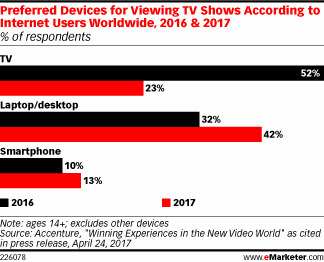



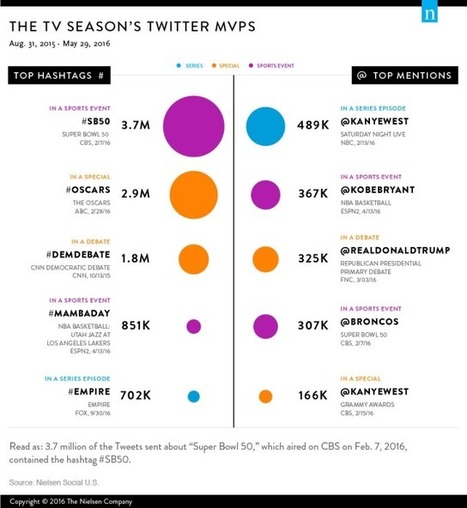
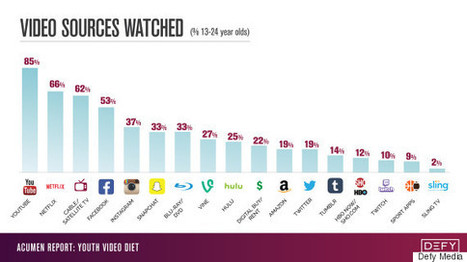

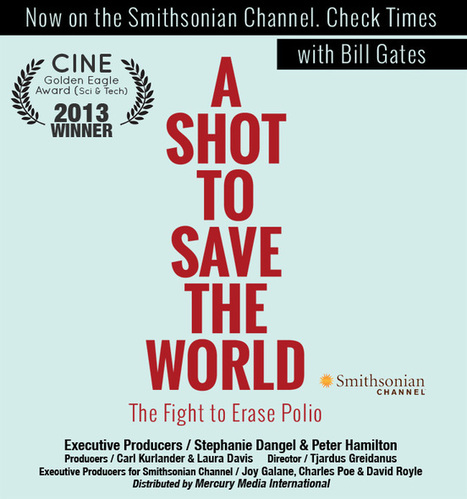
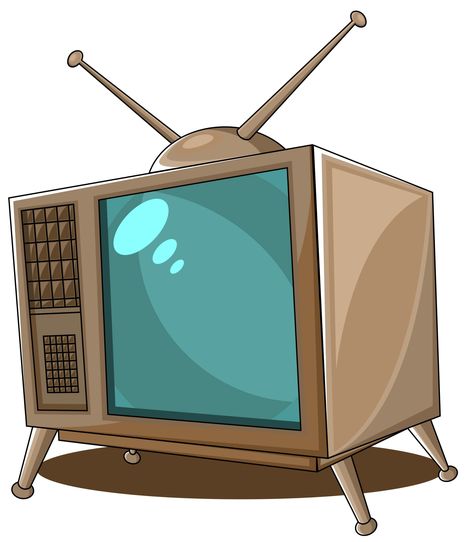
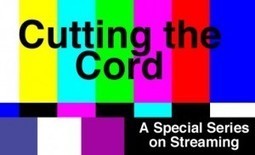
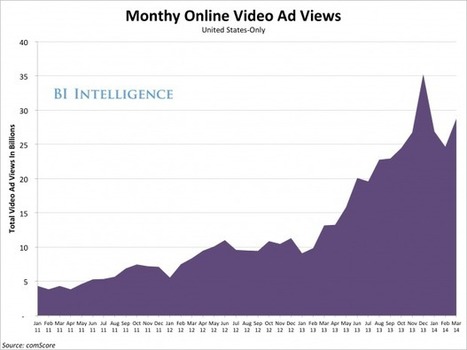
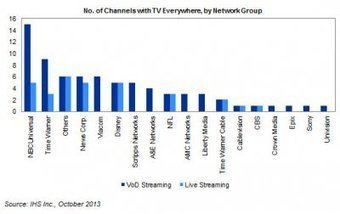
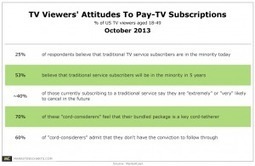

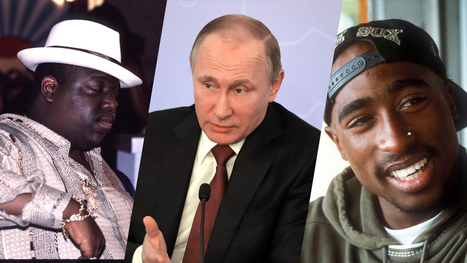

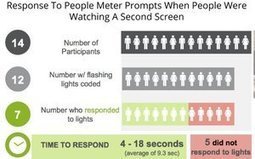
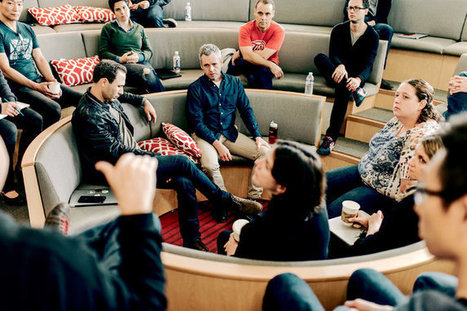


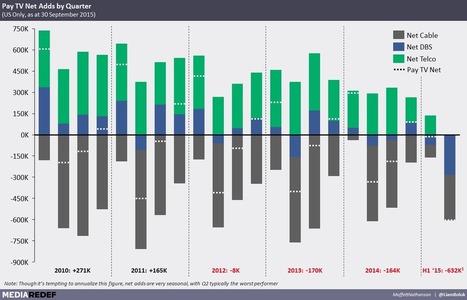

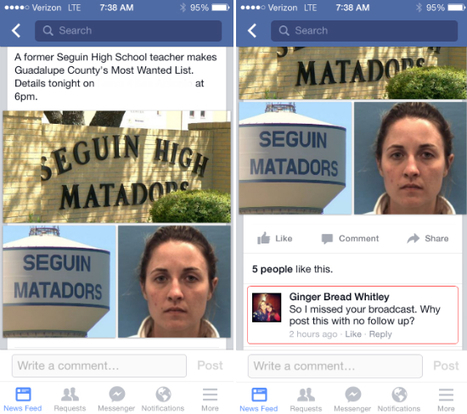




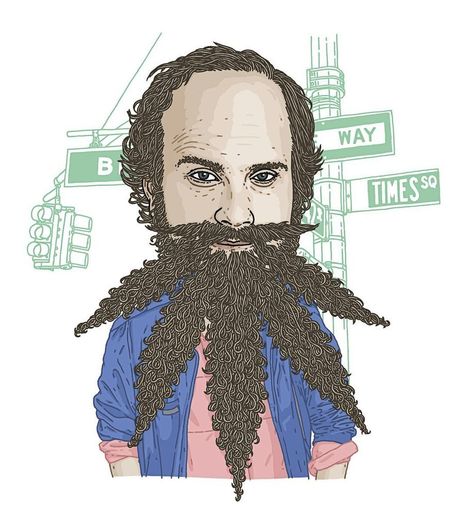
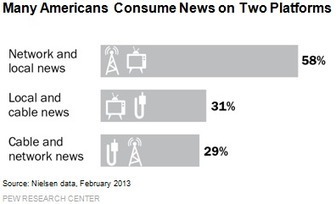





The arrival of Apple, Facebook and Google means that the hypercompetitive world of scripted TV is going to become even more ferocious.